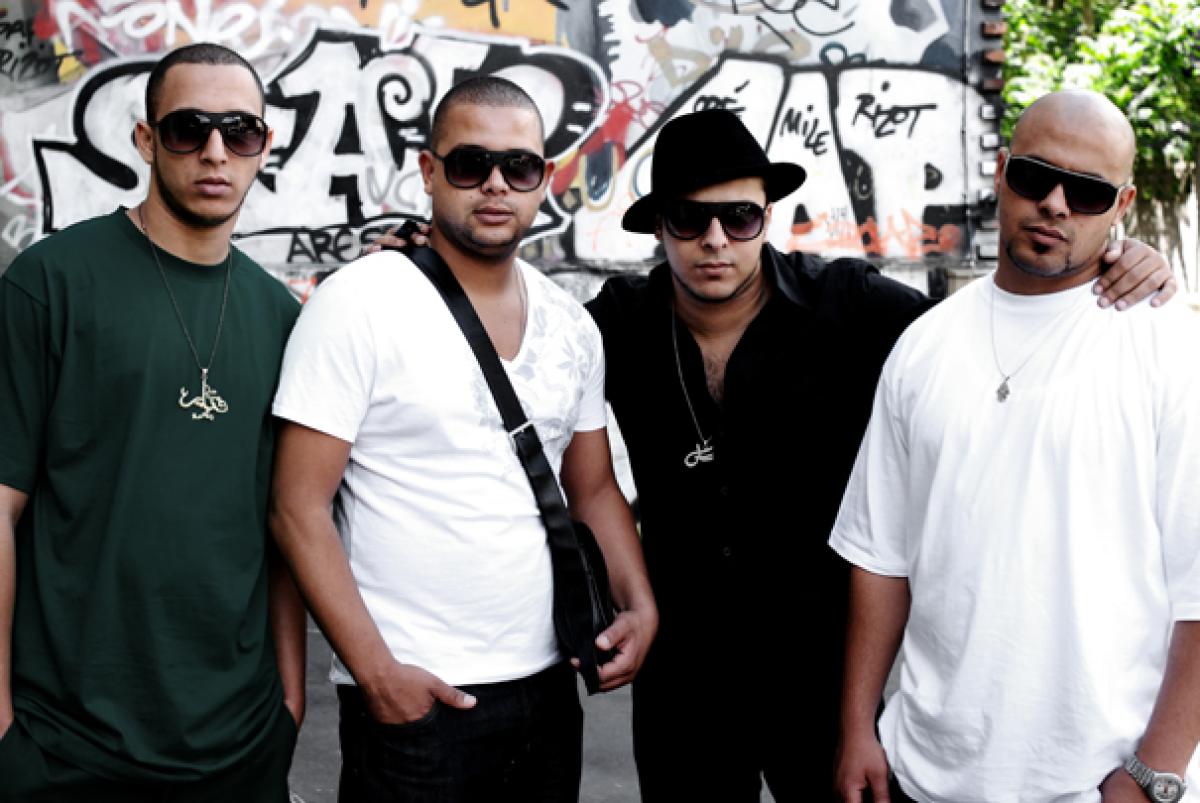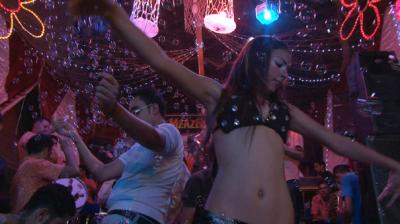
I Love Hip-Hop in Morocco
This is a story about the empowering force of (Moroccan) hip hop.
«We need to organize our efforts... we need concerts, man.» Brown Fingaz, a Moroccan rapper from Marrakesh opens up the movie I love hip-hop in Morocco (2007) with this statement. In fluent American-English this Moroccan born and bred B-Boy immediately cuts to the core: this is a story about the empowering force of (Moroccan) hip-hop.
I love hip-hop in Morocco is an interesting and captivating narrative about the coming into being of the first ever hip-hop festival in North Africa. A group of Moroccan hip-hoppers are determined to perform in their hometowns before their own local audiences. With help of an American researcher, Josh Asen, who is also the filmmaker, they embark on a journey looking for sponsors (Sprite) and support of the American embassy in Morocco to make this dream come true. Asen, who himself is also an important part of the crew, films the Moroccan hip-hoppers up close and personal. We learn about how they feel about hip-hop, life, religion, politics and most importantly freedom. The movie features some of the best and well known Moroccan hip-hop acts like MC Bigg, H-Kayne, Fnaïre, Brown Fingaz, Mot de Passe and DJ Key.
Filmed mostly as a hip-hop video with wobbly shots (from the hand-camera), hard cuts between the scenes and of course a lot of hip-hop music in the background, the movie is easily digestible- at least for a hip-hop fan like myself. The movie is, of course, about much more than just the trials and tribulations that the organisers run into whilst setting up the festival and raising funds. It is a story about freedom, freedom of speech, the role of Islam in the daily lives of Moroccan youth, politics and oppression by Mohamed VI, poverty, and the sake of arts, in this case hip-hop culture.
What makes the movie special is that in a natural, unforced way all aspects of hip-hop culture- music, break dance and graffiti- and all the problems Moroccan youth have to deal with in daily life, come together in a natural flow. Step by step, Asen takes us through the hurdles that the organizers must overcome. First of all, an important hurdle is gaining support of the family to choose a career in music, which is specifically hard for girls. Obviously, Islam plays an important role in this issue. The movie gives us an insight in how the parents of female rapper Fati Show deal with this issue and captures their private and maybe controversial – at least from a Moroccan perspective- thought that they consider their daughter to be boy and girl at the same time. The second hurdle is the problem of raising enough money, finding a sponsor and convincing the American embassy to support the festival. Finally, the last problem is promoting the events and trying to find ways to reach their potential audience.
Hip-hop music in this movie seems to represent the voice of the underdog. For these Moroccan youth, hip-hop is not just music, it is a way of life. They use it as their mode of expression. They use it to air their frustrations about feeling/ being oppressed by the King and by their religion. With their (sometimes) coded lyrics full of metaphors and references unknown to outsiders and with their self-defined (hip-hop) identities, Moroccan youngsters deal creatively with the rigid rules of family, politics and religion.
Video not available anymore.
A subject that remains remarkably untouched is the role of America and American culture. We see the organizers of the festival lobbying for support at the American embassy and at the Coca Cola company (owner of Sprite) – the American company of the world – but nothing is ever said about the possible ambivalent relation Moroccan youth might have with America with respect to American policy in the Middle East and the war on terror. We do see the keen consumption of American hip-hop culture by Moroccan youth. We do not get to know the real motivation of the American embassy to support this event, but we do see a press conference where Sprite publicly announces to make a donation for the festival. What is the political agenda of the American embassy really? Unfortunately, this remains hidden from view. Maybe this is not so strange, knowing that filmmaker Asen is residing in Morocco under a Fullbright Scholarship, which puts him in a difficult position to be critical towards his funding bodies.
Even though the movie might seem a bit outdated by now, it was first released in 2007, in the light of the Arab spring and the role of hip-hop music in the Tunisian and Egyptian revolution, I love hip-hop in Morocco is still a worthwhile and attention-grabbing picture. Morocco being a country where more than half of the population is under the age of 25, I would say a potential hip-hop fan base, the movie might contain some important signs directing us to know what the future of Morocco will be. Even though one of the fathers calls the hip-hop hype that has grabbed his son (Brown Fingaz) a passing fad, hip-hop may become a significant catalyst for the mobilization of large parts of Moroccan youth. If this mobilization remains purely an artistic one, or maybe gain political significance remains to be seen.
Biography
Published on January 04, 2012
Last updated on April 29, 2024
Topics
Can a bedroom producer change the world? How do artists operate in undersupplied conditions?
Place remains important. Either for traditional minorities such as the Chinese Lisu or hyper-connected techno producers.
From the political implications of human voice to its potential of un-making sense.
From Korean visual kei to Brazilian rasterinha, or the dangers of suddenly rising to fame at a young age.

